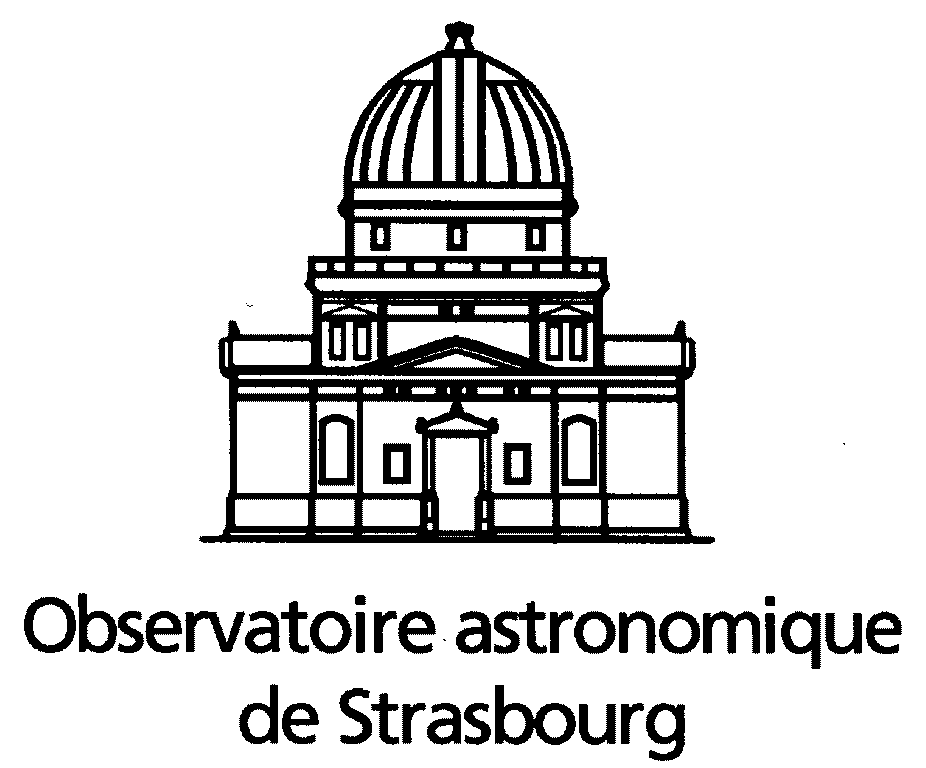
|
Fifth Illkirch Survey of
Galactic Hydrogen
|

|
Joachim Köppen Strasbourg Feb.2012/Jan.2018
Some brief explanations
This tool shows the results of the fifth survey at the radio line of atomic
hydrogen at 21 cm wavelength, done with the
ESA-Haystack radio telescope at the International Space University
in Illkirch between June 2011 and February 2012, with some pauses due to
mechanical problems. At times we also suffered from electronic interference,
which was manually removed from the data, but the presence of which may still be
discerned in some data sets.
The system temperature was about 300 K or below..
The data were taken by staying for 10 min at each galactic longitude (from 0° to
about 250° in steps of 2°) and in galactic latitude from -30° to +30°
(in steps of 2°),
with a coverage in radial velocity from -150 to +150 km/s. The results are shown as:
- one may chose the longitude range between
0°..360°, -90°..270°, -180°..180°, and -270°..90°
- false colour map of antenna temperature (i.e. the measured intensity) for
galactic longitude and latitude, at a fixed value of the radial
velocity. The colour bar at the right hand side gives the relation between colour
and the value varying linearly between minimum (violet) and maximum (red).
- false colour map of antenna temperature for galactic longitude and
radial velocity, for a given value of the galactic latitude. For glat=0°
one obtains a map from which the spiral arms of the Milky Way become apparent
and the galactic rotation curve, too (the white curve is the limit of the hydrogen
emission for a constant rotation velocity of 230 km/s).
- false colour map of antenna temperature for radial velocity and
galactic latitude, for a given value of the galactic longitude.
From the map at glong=90° one can see that the outer spiral arms lie above
the Galactic Plane, i.e. that the disc of the Milky Way is warped.
- the spectrum at the specified galactic longitude and latitude is a plot
of antenna temperature as a function of radial velocity. The bump near
vrad = 0 km/s is the emission from neutral hydrogen clouds in the
local spiral arm in which the Solar System is embedded. Other bumps are from
other spiral arms.
- the deprojected view of the data for a fixed value of the galactic
latitude shows how the Milky Way would look like when seen from the Northern
Galactic Pole. Similarly, a view with fixed galactic longitude shows a cut
through the disk, perpendicular to the Plane. By assuming a constant rotation velocity,
we can computing from the galactic coordinates and the radial velocity of every pixel
the true distance from the sun of the emitting parcel of gas. By simply associating
the pixel's observed antenna temperature with this true position in the Galaxy
the false colour map is generated.
- The values for the fixed parameter(s) can be changed by the user: enter a new
value in the associated field and hit the return key. NOTE: if the display
does not change, there's simply no data available for that position.
- Mouse position gives the values of all coordinates of the current
position of the mouse.
| Top of the Page
| Java Applets Index
| JavaScript Index
| my HomePage
|



